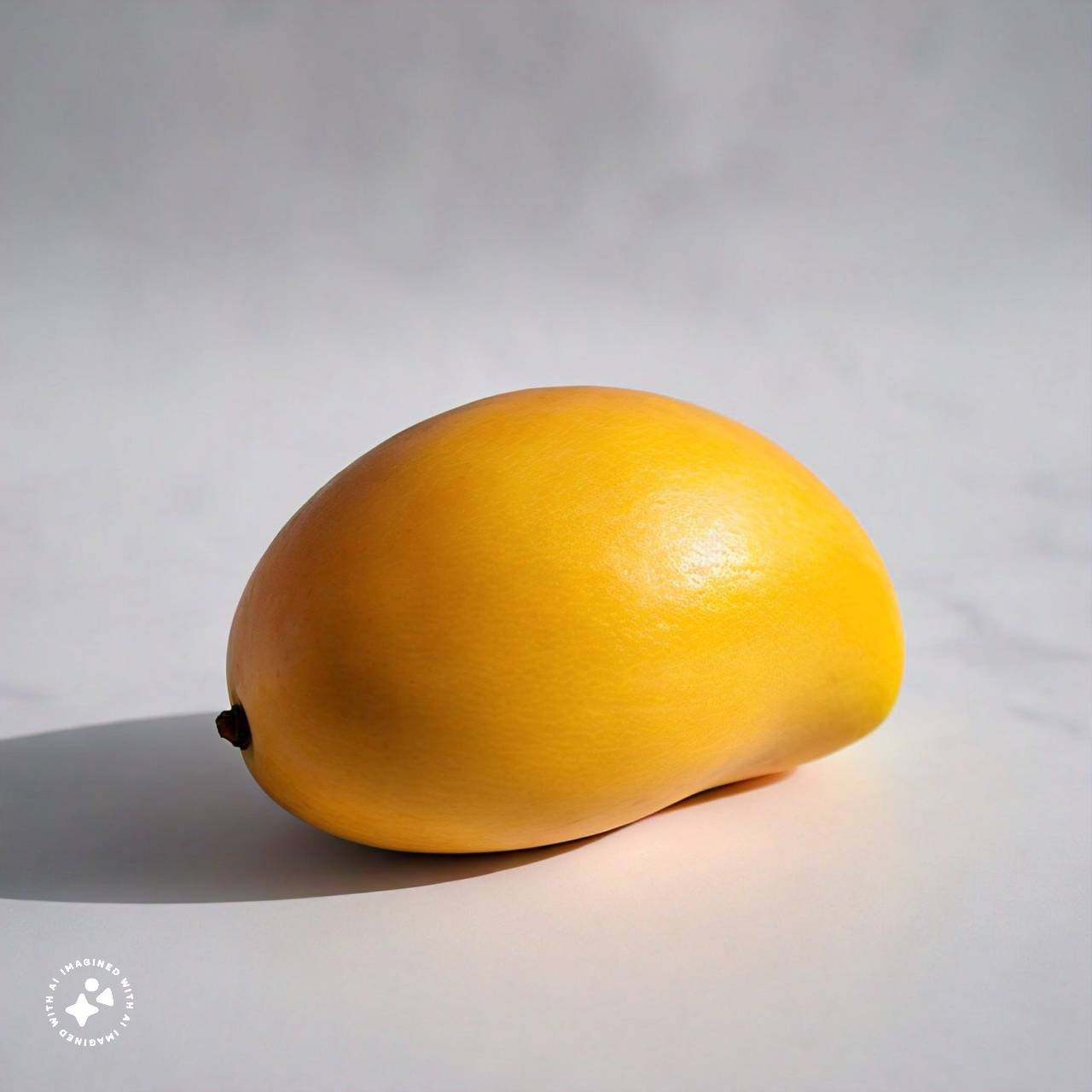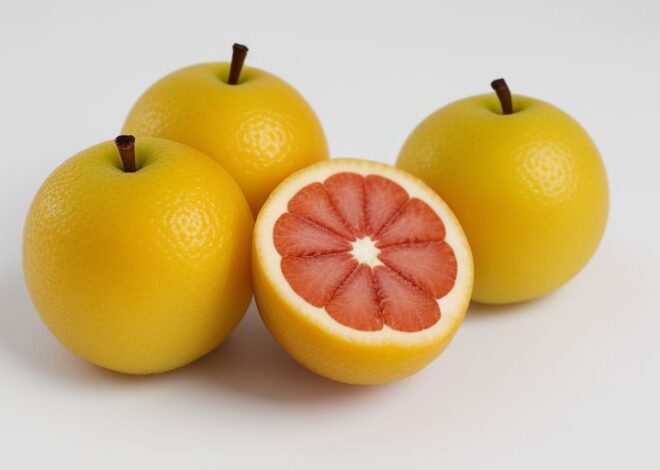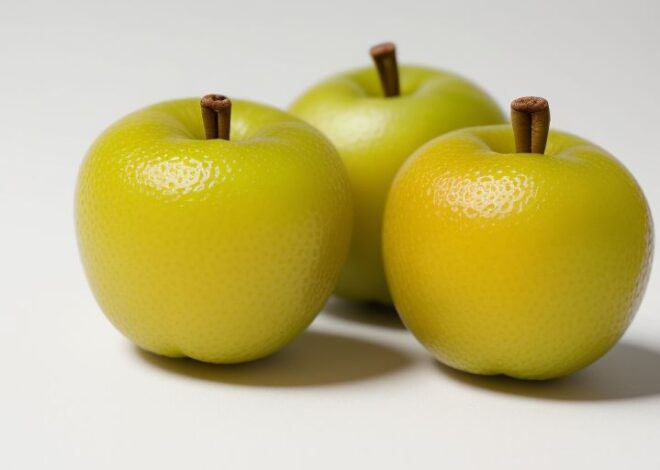
Mango
Introduction
Mango (Mangifera indica) is a juicy, sweet, and creamy fruit native to South Asia, widely cultivated in tropical and subtropical regions for its delicious fruit, medicinal properties, and cultural significance. With over 1,000 cultivars, mango is one of the most widely consumed and traded fruits globally.
Etymology
| Language | Word for Mango |
|---|---|
| Tamil | Mangay or Mankay |
| Malayalam | Manga (മാങ്ങ) |
| Portuguese | Manga |
| English | Mango |
The word “mango” originates from the Tamil language (southern India and Sri Lanka), where it is known as “mangay” or “mankay”. The fruit was introduced to the Middle East and Africa by Portuguese traders, who adopted the Malayalam word “manga” (മാങ്ങ), resulting in the name “mango”.
Description
| Characteristic | Description |
|---|---|
| Tree | Evergreen, up to 30 meters tall |
| Leaves | Dark green, lanceolate, clustered at branch ends |
| Fruit | Drupe, single seed, fleshy outer layer (pericarp) |
| Shape | Varies (ovoid, spherical, elliptical) |
| Size | 5-20 cm long, 3-10 cm wide |
| Color | Yellow, orange, red, green, or combination |
| Flavor | Sweet, sour, umami, bitter (varies among cultivars) |
Mango is an evergreen tree belonging to the Anacardiaceae family, growing up to 30 meters tall. Its leaves are dark green, lanceolate, and clustered at the ends of branches. The fruit is a drupe, with a single seed surrounded by a fleshy outer layer (pericarp). The fruit varies in shape, size, color, and flavor depending on the cultivar.
Taxonomy and Cultivars
| Subspecies | Description | Cultivars |
|---|---|---|
| M. indica | Common mango | Alphonso, Ataulfo, Chaunsa, Haden, Kent, Tommy Atkins |
| M. sylvestris | Wild mango | – |
Mango is classified into two main subspecies: M. indica (common mango) and M. sylvestris (wild mango). There are over 1,000 cultivars, including popular varieties like:
- Alphonso (India)
- Ataulfo (Mexico)
- Chaunsa (Pakistan)
- Haden (USA)
- Kent (USA)
- Tommy Atkins (USA)
Distribution and Habitat
| Region | Countries |
|---|---|
| Native | India, Sri Lanka, Southeast Asia |
| Widely cultivated | South America (Brazil, Peru), Central America (Mexico, Costa Rica), Caribbean islands, Africa (South Africa, Egypt), Middle East (Israel, Turkey), Australia (Queensland) |
Mango is native to South Asia, specifically the Indian subcontinent and Southeast Asia. It is widely cultivated in tropical and subtropical regions, including:
- South America (Brazil, Peru)
- Central America (Mexico, Costa Rica)
- Caribbean islands
- Africa (South Africa, Egypt)
- Middle East (Israel, Turkey)
- Australia (Queensland)
Cultivation
| Requirement | Description |
|---|---|
| Soil | Well-draining, rich in nutrients |
| Sunlight | Full sun to partial shade |
| Watering | Regular, but not excessive |
| Fertilization | Regular, balanced fertilizers |
| Pruning | Annual, to maintain shape and promote fruiting |
Mango trees are grown in well-draining soil with full sun to partial shade. They require regular watering, fertilization, and pruning. Grafting and budding are common propagation methods.
Production and Uses
| Use | Description |
|---|---|
| Fresh consumption | Eaten fresh or used in salads |
| Processing | Juice, smoothies, purees, jams, preserves, chutneys |
| Cooking and baking | Used in various recipes |
| Dried or canned | Exported to various countries |
Mango is a significant crop in many countries, with India being the largest producer. The fruit is:
- Eaten fresh or used in salads
- Processed into juice, smoothies, and purees
- Made into jams, preserves, and chutneys
- Used in cooking and baking
- Dried or canned for export
Phytochemistry
| Compound | Description |
|---|---|
| Flavonoids | Quercetin, kaempferol (antioxidant, anti-inflammatory) |
| Phenolic acids | Gallic acid, ellagic acid (antioxidant, antimicrobial) |
| Terpenoids | Lupeol, mangiferin (antioxidant, anti-inflammatory) |
| Ascorbic acid | Vitamin C (antioxidant, immune system) |
| Fiber | Dietary fiber (digestive health, satiety) |
| Antioxidants | Various compounds (protect against cell damage) |
Mango contains various bioactive compounds, including flavonoids, phenolic acids, terpenoids, ascorbic acid, fiber, and antioxidants, which contribute to its nutritional and medicinal value.
Flavor
| Flavor Component | Description |
|---|---|
| Sweetness | Sucrose, fructose, glucose |
| Acidity | Citric acid, malic acid |
| Umami | Glutamic acid, aspartic acid |
| Bitterness | Quercetin, kaempferol |
Mango flavor is a combination of sweet, sour, umami, and bitter tastes, with a hint of bitterness. The flavor profile varies among cultivars, with some having a more intense sweetness or acidity.
Toxicity
| Compound | Description |
|---|---|
| Urushiol | Allergenic oil (skin irritation, itching, blistering) |
Mango skin and leaves contain urushiol, an allergenic oil that can cause skin irritation, itching, and blistering in some individuals.
Nutrition
| Nutrient | Amount (per 100g) |
|---|---|
| Energy | 51 kcal |
| Carbohydrates | 13.7 g |
| Fiber | 1.6 g |
| Protein | 0.8 g |
| Fat | 0.3 g |
| Vitamin C | 36.4 mg |
| Potassium | 156 mg |
Mango is a nutrient-rich fruit, providing energy, carbohydrates, fiber, protein, and essential vitamins and minerals like vitamin C and potassium.
Culture
| Culture | Significance |
|---|---|
| Hinduism | Sacred fruit, associated with Lakshmi |
| Pakistan | National fruit, Chaunsa cultivar |
| Mexico | Symbol of love and fertility |
| Southeast Asia | Traditional medicine, rituals, and ceremonies |
Mango has significant cultural and symbolic meanings in many societies, including Hinduism, Pakistan, Mexico, and Southeast Asia, where it is used in traditional medicine, rituals, and ceremonies.
Conclusion
Mango is a fascinating fruit with a rich history, diverse cultivars, and significant cultural and nutritional value. Its sweet and creamy flavor has captured the hearts of people worldwide, making it one of the most widely consumed and traded fruits globally. With its numerous health benefits, mango is a fruit that deserves to be celebrated and enjoyed in all its forms.


